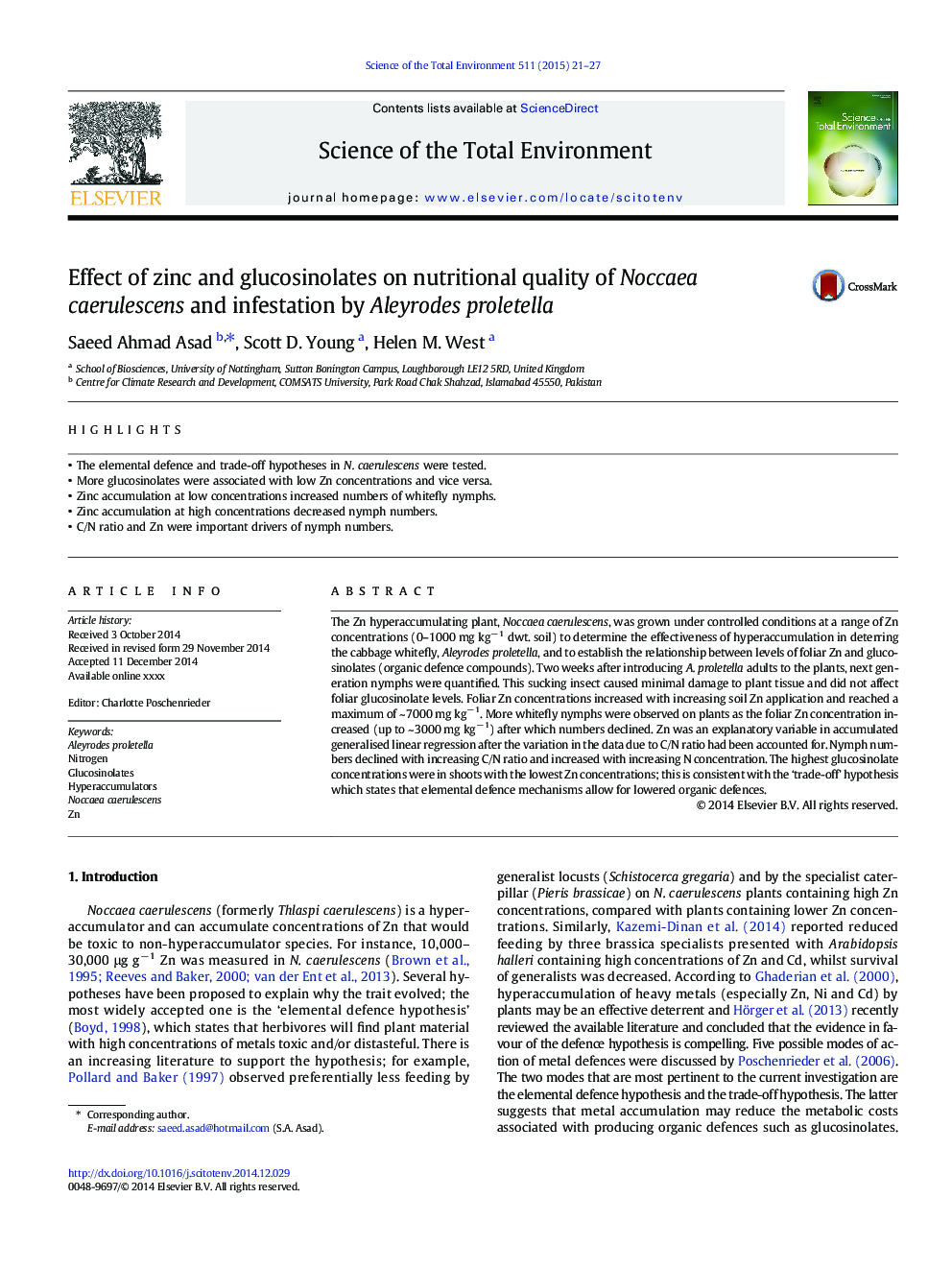| Article ID | Journal | Published Year | Pages | File Type |
|---|---|---|---|---|
| 6327400 | Science of The Total Environment | 2015 | 7 Pages |
Abstract
The Zn hyperaccumulating plant, Noccaea caerulescens, was grown under controlled conditions at a range of Zn concentrations (0-1000 mg kgâ 1 dwt. soil) to determine the effectiveness of hyperaccumulation in deterring the cabbage whitefly, Aleyrodes proletella, and to establish the relationship between levels of foliar Zn and glucosinolates (organic defence compounds). Two weeks after introducing A. proletella adults to the plants, next generation nymphs were quantified. This sucking insect caused minimal damage to plant tissue and did not affect foliar glucosinolate levels. Foliar Zn concentrations increased with increasing soil Zn application and reached a maximum of ~ 7000 mg kgâ 1. More whitefly nymphs were observed on plants as the foliar Zn concentration increased (up to ~ 3000 mg kgâ 1) after which numbers declined. Zn was an explanatory variable in accumulated generalised linear regression after the variation in the data due to C/N ratio had been accounted for. Nymph numbers declined with increasing C/N ratio and increased with increasing N concentration. The highest glucosinolate concentrations were in shoots with the lowest Zn concentrations; this is consistent with the 'trade-off' hypothesis which states that elemental defence mechanisms allow for lowered organic defences.
Related Topics
Life Sciences
Environmental Science
Environmental Chemistry
Authors
Saeed Ahmad Asad, Scott D. Young, Helen M. West,
